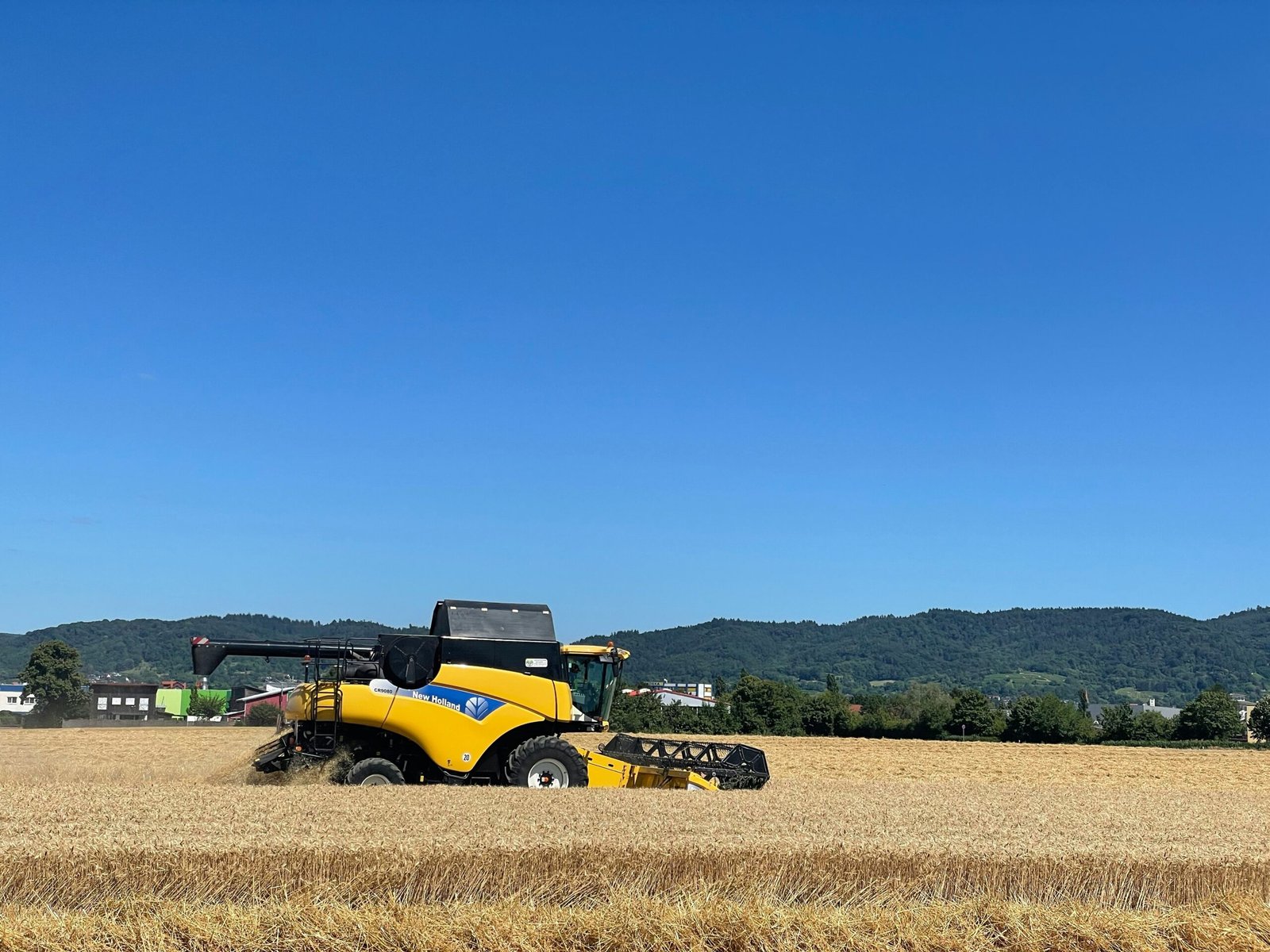Introduction to Early Human Societies
Early human societies, commonly referred to as hunter-gatherers, primarily relied on foraging and hunting for their subsistence. These groups were often small and comprised of family units that moved frequently in search of food, water, and shelter. The nomadic lifestyle of these societies allowed them to adapt to changing environments, making use of various resources available at different times of the year. Social structures within these communities were generally egalitarian, with leadership typically rotating based on individual skills or circumstances.
The living conditions of hunter-gatherers varied widely, depending on their geographical location and climate. In some regions, such as the temperate forests, people constructed temporary shelters using materials like wood, bark, and leaves. Conversely, those in arid environments relied on natural caves or built simple structures to provide protection from the elements. As a result of their mobility, belongings were minimal and consisted mainly of tools, clothing, and food supplies, which contributed to a lifestyle of efficiency and adaptability.
Survival tactics employed by these early societies were sophisticated and demonstrated a profound understanding of their environment. Knowledge of seasonal migrations, animal behavior, and plant cultivation played a crucial role in their ability to find food. Tools crafted from stone, bone, and wood were essential for hunting and gathering efforts. Additionally, the use of fire served multiple purposes, including cooking food, providing warmth, and protecting against predators.
As they thrived in diverse ecosystems, hunter-gatherers developed rich cultural traditions, including storytelling, art, and rituals, which served to unify their communities. This intricate connection with nature and their resourcefulness laid the foundation for human cohabitation and eventually set the stage for the monumental shift toward agriculture. Understanding these early human societies allows us to appreciate the evolution of agriculture and the significant changes in lifestyle that followed.
The Concept of Hunter-Gatherer Life
The hunter-gatherer lifestyle represents one of the earliest forms of human existence, characterized by a reliance on foraging and hunting for sustenance. This nomadic way of life involved the constant movement of groups in search of seasonal resources, allowing them to adapt to varying environmental conditions and food availability. Hunter-gatherers employed a diverse array of techniques to procure food, including trap setting, netting, and the use of specific tools crafted from stone, bone, or wood. These tools were essential for both hunting animals and gathering plant-based resources, showcasing a deep understanding of their environment.
For hunter-gatherers, knowledge of seasonal changes played a vital role in their survival. They monitored plant growth cycles and animal migration patterns, leading to a more efficient gathering of resources. This intimate connection with nature not only ensured food security but also fostered a sense of community as individuals often worked together in groups to hunt and gather. The communal aspect of their lifestyle helped to strengthen social bonds, as tasks such as sharing food and childcare were commonly shared responsibilities.
The Agricultural Revolution: Causes and Effects
The Agricultural Revolution, which occurred around 10,000 years ago, marked a profound transformation in human society, shifting from a nomadic lifestyle of hunting and gathering to one centered on agriculture. This transition was driven by a confluence of factors, including climatic changes, population pressures, and a growing need for stable food sources. Understanding these elements is crucial to grasping how agriculture evolved and shaped human civilization.
One of the primary catalysts for this revolution was the end of the last Ice Age, which brought about significant climatic changes. As temperatures rose and glaciers retreated, various regions experienced a more hospitable environment, fostering the growth of wild grains and other edible plants. The changing climate provided opportunities for our ancestors to extract food from their surroundings more efficiently. Regions like the Fertile Crescent in the Near East became particularly fruitful, encouraging early human communities to settle in these areas.
In addition to climatic shifts, increasing population pressures also played a critical role in the transition to agriculture. As hunter-gatherer groups began to grow in size, the demand for a reliable food supply intensified. The previous mobile lifestyle of following animal herds became less sustainable as the population surged. Settling in one location offered a solution; by cultivating crops and domesticating animals, communities could support larger groups more effectively. This newfound stability not only improved food security but also laid the groundwork for the development of complex societies.
The need for stable food sources cannot be overstated. The unpredictability of hunting and gathering could lead to periods of scarcity, prompting the search for more reliable methods of sustenance. As tribes learned to plant and harvest seeds, domestication became a key aspect of human progress, leading to profound social, economic, and cultural changes. The Agricultural Revolution was thus a pivotal moment that fundamentally altered the trajectory of human history.
Domestication of Crops and Animals
The transition from hunter-gatherer societies to settled agricultural communities marked a significant turning point in human history. This evolution was largely driven by the domestication of various crops and animals, a process that began approximately 10,000 years ago. Domestication refers to the adaptation of wild species to meet human needs, resulting in new varieties that exhibited desirable traits such as increased yield, size, and resilience to pests or diseases.
Among the earliest domesticated crops were cereals such as wheat, barley, and rice. The Fertile Crescent, an area that stretches from modern-day Iraq to Israel, is often cited as one of the original cradles of agriculture, where these vital crops were first cultivated. Similarly, legumes like lentils and chickpeas were also domesticated in this region, providing essential protein sources for growing populations. Over time, farming practices spread to other regions, leading to the domestication of crops like maize in Mesoamerica and sorghum in Africa.
The domestication of animals complemented agricultural developments, providing essential resources such as meat, milk, and labor. Species such as sheep, goats, and cattle were first domesticated in the Near East, while pigs and chickens emerged as vital livestock in various parts of the world. This process not only enhanced food security but also fostered social structures, trade systems, and ultimately the rise of civilizations. The reliance on domesticated animals for transport and agriculture further solidified the role of livestock in society.
The implications of domestication were profound. As agriculture led to surplus food production, communities could support larger populations, paving the way for complex societies. Over generations, the deliberate selection and breeding of crops and animals influenced global biodiversity, setting the precedent for modern agricultural practices. This transformation illustrates the interplay between human ingenuity and the natural environment, shaping the trajectory of civilization.
The Role of Technology in Agricultural Development
Technology has been a fundamental driver in the evolution of agriculture, influencing farming practices from the earliest days of human civilization. Initially, hunter-gatherer societies relied on rudimentary tools fashioned from stone and wood. However, with the advent of the Agricultural Revolution, innovations began to emerge, facilitating a transition from nomadic lifestyles to settled farming. These advancements not only enhanced productivity but also allowed for the cultivation of a wider variety of crops.
One of the most significant technological advancements in agriculture was the development of various tools that improved efficiency in farming tasks. The introduction of plows, for instance, revolutionized the way land was cultivated, allowing deeper tillage of the soil and greater yields. Over time, advancements such as the seed drill enabled farmers to plant seeds with precision, thus optimizing space and resources. These tools laid the groundwork for increased agricultural output.
Irrigation techniques also played a critical role in the evolution of agricultural practices. Early farmers employed simple methods such as channeling water from nearby rivers to their fields. As societies progressed, so did their understanding of water management. Technologies such as the qanat systems in ancient Persia and the aqueducts of Rome enabled the efficient transportation of water over vast distances, ensuring that crops could thrive in arid environments. Such innovations underscored the essential role of technology in sustaining agricultural productivity.
Lastly, improvements in storage methods have been pivotal in agricultural development. Preservation techniques evolved, allowing crops to be stored for extended periods without spoilage. The invention of granaries and silos ensured that surplus harvests could be preserved for leaner times, further stabilizing food production. This synergy between technology and agricultural development has undeniably shaped the course of human civilization, allowing societies to flourish through enhanced food security.
Social Changes Triggered by Agriculture
The transition from a hunter-gatherer lifestyle to an agricultural society brought profound social changes that fundamentally reshaped human interaction and community structures. One of the most significant changes was the establishment of permanent settlements. With the advent of agriculture, groups could cultivate land and rely on stable food sources, allowing them to settle in one location rather than moving constantly in search of food. This led to the formation of villages and later, more complex urban centers, fostering a sense of community and belonging among individuals.
Alongside permanent settlements, agriculture introduced the concept of property ownership. As people began to cultivate land, the idea that specific parcels of land belonged to individuals or families emerged. This shift encouraged a sense of personal investment in the land and its productivity, which led to increased competition for resources. Consequently, this competition played a crucial role in shaping social structures, as wealth and resources became concentrated in the hands of a few, contributing to social stratification. Those who owned large swathes of productive land acquired more power and influence, creating distinct social classes that changed how communities operated.
The development of agriculture also paved the way for complex societies. With increased food production, populations surged, necessitating more sophisticated governance and management systems. Societies established leadership roles, laws, and trade practices, which solidified the foundations for what would become modern civilizations. The friction between different groups often led to alliances, conflicts, and negotiations, highlighting the intricate social dynamics brought forth by agricultural practices. Thus, agriculture was not merely about cultivating crops; it was the catalyst for a societal transformation that reshaped human relationships and frameworks, laying the groundwork for advancements in culture, technology, and governance.
Impact on Health and Diet
The transition from a hunter-gatherer lifestyle to an agricultural-based society marked a significant turning point in human health and diets. Initially, hunter-gatherers enjoyed a diverse diet rich in fruits, vegetables, nuts, and lean meats, which contributed to their overall health. Their nutritional intake was high in fiber and low in processed foods, which supported optimal digestion and overall wellness. However, with the advent of agriculture, this dietary landscape shifted dramatically.
The cultivation of staple crops such as wheat, corn, and rice led to a reliance on fewer food sources. This not only diminished dietary variety but also resulted in nutritional deficiencies. Populations became more dependent on carbohydrate-rich foods, leading to various health issues, including obesity, diabetes, and heart disease. The high-caloric content of agricultural diets often lacked essential nutrients, which were abundant in the foraging diets of early humans.
Moreover, agriculture brought about sedentary lifestyles as communities settled near their fields, resulting in less physical activity. The reduced mobility contributed to various health complications. The close contact among larger populations also facilitated the spread of infectious diseases. While hunter-gatherers lived in smaller, more mobile groups, agricultural communities became hubs for diseases like smallpox and influenza, as pathogens thrived in densely populated settings.
Additionally, the domestication of animals and the increased proximity to livestock introduced zoonotic diseases, which further impacted the health of agrarian societies. In contrast to the more varied and balanced diets of their foraging ancestors, early farmers faced a range of health problems linked to their new way of life. These adaptations illustrate the complex relationship between agriculture, health, and diet, highlighting the versatile challenges that arose with this pivotal evolution in human history.
Cultural Developments Linked to Agriculture
The transition from hunter-gatherer societies to agricultural communities marked a pivotal shift that profoundly influenced cultural practices throughout human history. As populations settled and began to cultivate land for food production, significant milestones arose that would shape the trajectory of human civilization. One of the foremost cultural developments emerging from organized agriculture was the dawn of artistic expression. With the availability of surplus food, individuals could dedicate more time to creative endeavors, leading to the creation of early forms of art, which often reflected agricultural life and the surrounding environment.
In addition to artistic advancements, the rise of agriculture laid the groundwork for the development of organized religion. As communities centered around farming, people began to worship deities associated with fertility, growth, and harvest. Rituals and ceremonies aimed at ensuring bountiful crops became integral to cultural identity, fostering a shared sense of purpose among community members. These practices not only strengthened communal bonds but also helped to establish social hierarchies, as certain individuals or families often assumed leadership roles within religious and cultural contexts.
The advent of agriculture also facilitated the development of written communication. As societies grew and became more complex, the need for record-keeping emerged. Early writing systems were often created to manage agricultural resources, track harvests, and document trade transactions. This innovation propelled the exchange of ideas, laws, and cultural narratives, further solidifying community identity. Thus, agriculture did not just transform food production; it catalyzed a series of interconnected cultural developments that laid the foundation for the advanced civilizations we recognize today.
Legacy of Early Agriculture in Today’s World
The legacy of early agriculture is profoundly embedded in the fabric of modern society, affecting various facets of life, from economic structures to environmental practices. The transition from nomadic hunter-gatherer societies to settled agricultural communities marked a pivotal moment in human history. This evolution not only allowed for a more stable food supply but also fostered the development of complex societies, leading to advancements in technology, trade, and governance.
One significant aspect of early agricultural practices is their impact on contemporary farming methods. Many modern techniques can be traced back to ancient innovations, such as crop rotation and selective breeding. These historical methodologies contributed to the efficiency and productivity of today’s agricultural systems. Furthermore, the cultivation of staple crops established a foundation for societal growth, supporting larger populations and diverse economies. Current global food systems remain intricately linked to the agricultural choices made by our ancestors.
Economic structures reflect this legacy as well. The growth of agriculture in ancient times transformed economies from subsistence-level practices to complex market-driven systems. Today, agricultural commerce influences global trade, employment, and even political relations. The sectors rooted in agriculture play a critical role in the livelihoods of millions, demonstrating the continuing relevance of those early agricultural decisions.
Moreover, early agricultural practices laid the groundwork for sustainable living. The recognition of seasonal cycles and natural ecosystems is mirrored in today’s efforts to promote sustainable farming. Transitioning to organic and regenerative agriculture can be seen as a return to these time-tested practices, aiming to harmonize food production with ecological well-being.
In conclusion, the legacy of early agriculture continues to resonate within modern society, shaping economic frameworks, farming techniques, and sustainable practices that support the current and future populations of the world. Understanding this connection is vital for appreciating the evolution of agriculture and its ongoing impact on our lives.



